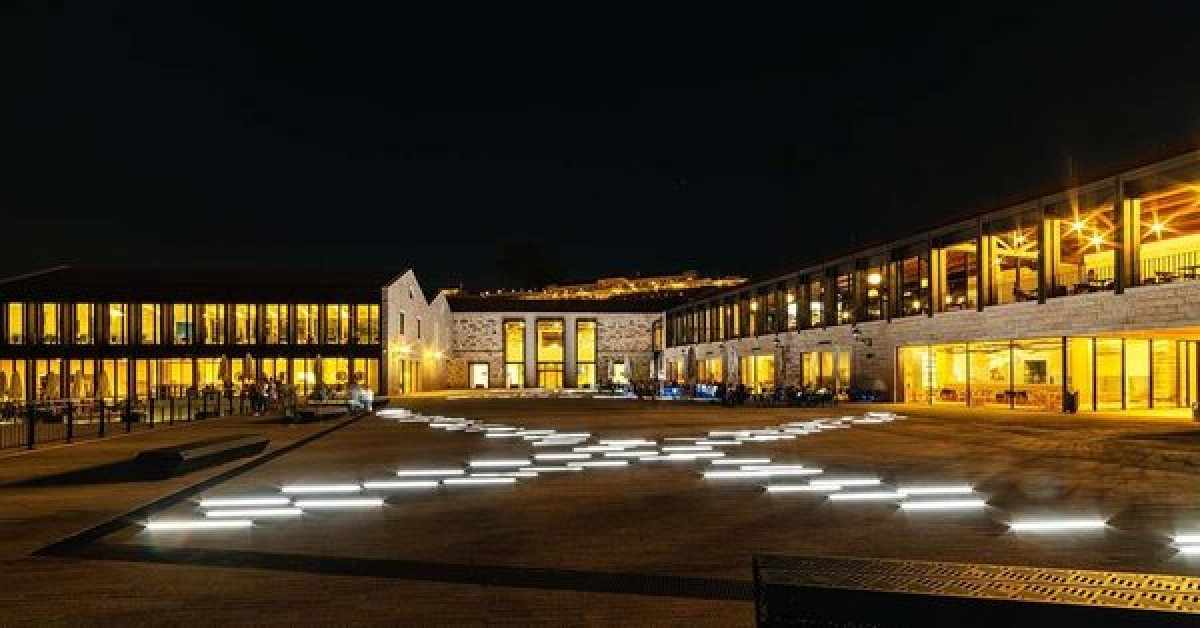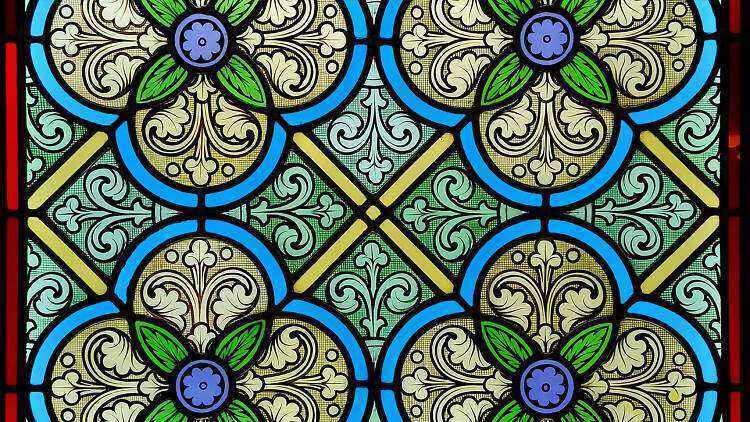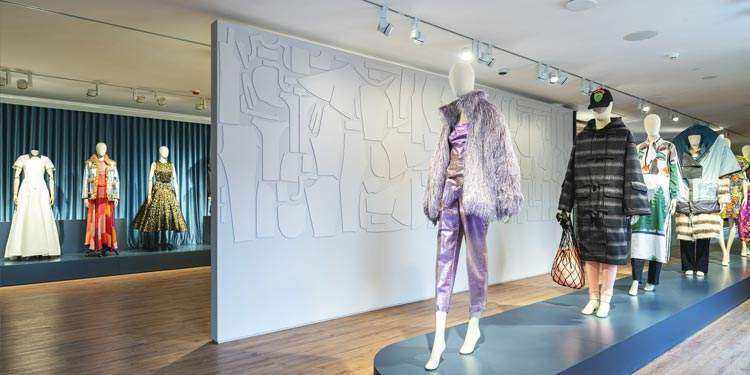
When the world slowed down, Porto region worked hard to renovate buildings and build museums, inviting visitors not only to contemplate, but also to learn through immersive experiences. In 2021 alone, ten spaces were inaugurated that it is imperative to go to at least once. The result of the investment made in archives and deposits in pandemic times can now be visited in Porto, Matosinhos, Valongo and Vila Nova de Gaia. These are museums that cover various tastes and various eras. They teach how to understand the past, such as the history of the Holocaust told by the victims or the history of bakery told by those who still make a living out of it, but they also challenge you to get down to work, packaging your own canned food or testing chemical formulas. And, of course, they invite to leisure - who doesn't like tasting Douro wines? - and to aesthetics, allowing visitors to discover the chronology of the textile industry and of the Portuguese designer fashion or to marvel at the play of colour and light in the stained-glass windows.
There are museums for all tastes, all providing rich and unforgettable experiences. LUXIMOS Christies International Real Estate has prepared for you a guide with the ten novelties.

Stained glass is one of the most widespread forms of artistic painting since the Renaissance. Historically, its production is associated with religious and spiritual symbolism, and it is also a noble decorative element in many public and private buildings. Over time, new artistic movements brought new creative visions to the conception of stained glass, which did not escape masters such as Amadeo Souza-Cardoso or Júlio Resende. This space is dedicated to this art form. It opened its doors in October 2021. It is located in Casa da Vandoma, in Rua de D. Hugo, in the heart of Porto's Cathedral Hill. The Stained Glass Museum presents a selection of works by João Aquino Antunes, the last Portuguese painter to dedicate himself to stained glass windows. The artist was a professor of stained glass and mosaic for over 36 years at the Faculty of Fine Arts of the University of Porto, where he graduated. But it was when he was still a child that he started playing with pieces of coloured glass in his father's atelier, from whom he learnt all the techniques of this pictorial expression. João Aquino Antunes belongs to the Atelier Antunes family of artisans, founded in 1906 in Porto. There are several of his works scattered around the city, in the Santo Ildefonso Church, the Congregados Church, the Lello Bookshop and the Infante Sagres Hotel. In the museum, there are dozens of traditional stained glass windows, decorative panels, abstract art installations and a 400-colour glass kaleidoscope.
Related: Why is it worth investing in Porto?
Opened in April 2021, what is considered the first Holocaust Museum of the Iberian Peninsula is located in Rua do Campo Alegre. It was created by members of Porto's Jewish Community, whose relatives were victims of the Nazis in the Second World War. The space portrays Jewish life before, during and after the Holocaust, from the expansion of Nazism in Europe, through the ghettos, the refugees, the concentration, work and extermination camps, the Final Solution, the death marches, to the liberation and the post-war period. The story is told by the victims. It is possible to visit a reproduction of the dormitories of the Auschwitz concentration camp, a name room, a flame memorial, a conference room, a study centre, corridors with the complete narrative, photographs and even watch real films. The Museum also hosts documents and objects left by refugees in the Synagogue of Porto during the war. In fact, in 2013, the Jewish Community of Porto shared with the Holocaust Museum of Washington all its archives concerning refugees who passed through the city of Porto. But these archives, which include official documents, testimonies, letters and hundreds of individual files, now live in this museum as well.
Bringing invisible pieces to the light of day is the concept of this museum that was born in July 2021 in the old water reservoir of the Pasteleira Park. The reservoir, inaugurated in 1986 and deactivated in 1998, was renovated and transformed into an archaeological station that now functions as a museum, as a work and mediation space, and as a living reserve where archaeological remains are kept. The space brings together artefacts, traces and fragments found in excavations or collected from buildings and monuments in the city. The time spectrum covered by this collection goes from the contemporary era to the Palaeolithic, thus extending from History to Prehistory. The rehabilitation of the building was the responsibility of the architects Alexandre Alves Costa and Sérgio Fernandez, who were able to show the hitherto hidden arches and columns from the 19th century. The Reservoir has around 200 pieces on display (thousands in storage) and dispenses with any technological device, whether multimedia or audiovisual. The idea is to invite the visitor to simplicity.
The Matosinhos Memory Museum was born in August 2021 in the historic Palacete Visconde de Trevões. Its mission is to enhance the historical and heritage memory of the territory of Matosinhos, crossing it with the individual memories of its inhabitants, in a meeting between its past and present. The museological space has temporary exhibitions and a permanent exhibition, based on the memories and valences of the building itself and of its first owner, Emídio Ló Ferreira, who lived there until 1942. The Palacete Visconde de Trevões is a building from the beginning of the 20th century, meanwhile acquired by the municipality, which once functioned as an industrial and commercial school and as the municipal library.
Related: Matosinhos Sul increasingly sought-after for buying apartments
The Port Wine Museum, a six-storey building in purposefully black colour (like the Port wine bottles) signed by the architects Camilo Rebelo and Cristina Chicau, has a multi-purpose entrance - via Rua da Reboleira and Muro dos Bacalhoeiros, a kind of balcony over the River Douro - and is an ode to the city's liquid culture and its main symbol: wine. Opened in 2019, it reopened in June 2021 with a new mission and a new name: Douro Extension, a starting point for discovering the demarcated region. The space, which showed the city's relationship with the wine that was produced in the Douro, is now one of the cores of the Porto City Museum. The new Douro Extension expands its programme to also embrace the river and the wine region. Located in the heart of the Ribeira of Porto, here you can see exhibitions, taste one of the 700 wines from various origins, visit the Wine Office and the Wine Archive or attend seminars.

The World of Wine, in Vila Nova de Gaia, opened in May 2021 a space that pays tribute to the long tradition of the textile industry in the North of Portugal. Porto Fashion & Fabric Museum gathers a collection donated by several companies and more than 40 national designers (Ana Salazar, José António Tenente, Miguel Vieira, Luís Buchinho, Nuno Baltazar, Nuno Baltazar, Fátima Lopes, Maria Gambina, Filipe Faísca, Luís Carvalho, Anabela Baldaque...). Here it is possible to learn all the steps of creation, from the processing of the raw material to obtain the thread, through weaving, dyeing, finishing and making the garment, ending with the recreation of a shop window. On the first floor of the 18th-century building, an exhibition goes through the most relevant chronological moments in the history of the industry since the 16th century, with stops at the Riopele, Tintex and Têxteis Manuel Gonçalves collections. The second floor is dedicated to the art of filigree, men's and women's footwear and national designer fashion.
Related: Vila Nova de Gaia in the Top 10 best cities to live in
The Conservas Pinhais Factory Tour living museum, at Avenida Menéres, was inaugurated in October 2021. In the space where the centenary cannery Pinhais maintains the artisanal production method of 1920, it is now possible to follow, in an immersive way, the entire production process: from the entrance of the fish to its packaging. It is also possible to take part in tasting sessions and wrap your own tin. The factory in Matosinhos has been classified as Property of Municipal Interest since 2020, for being one of the oldest still operating, for maintaining the traditional production process and for favouring fresh fish from the Atlantic. All visits to the Living Museum, subject to prior booking, will be guided by cultural mediators, who will take visitors on a journey to the past, to the roots of Pinhais and all its brands, namely the most international, Nuri.
The "regueifa" bread and the biscuit are flags of the gastronomic and cultural identity of Valongo, which in January 2021 opened a space to pay tribute to their history, aromas and ancestral flavours, but also to the bakers, biscuit-makers and all the people who contributed to the development of this sector. In addition to visiting the various exhibition spaces, which display objects and memories linked to baking, it is possible to get hands-on and learn how to make this ancestral art, through workshops. At the end of the visit, all the delights are tasted. The Regueifa and Biscuit Workshop is located in the building of the old Firemen Headquarters. The permanent exhibition, "From Grain to Bread", is divided into four themes - agriculture, milling, old bakery and bread route - which complement each other and help the visitor to better understand the whole cycle of bread production in Valongo. The story is told from the moment the land is worked to plant the grain until the moment the final product reaches the homes of the customers.
The Porto Museum of Natural History and Science returned to the city, in April 2021, an emblematic space in the history of Chemistry in Portugal. In the renovated Ferreira da Silva Laboratory, inaugurated in 1910, it is possible to take a trip back to the beginnings of modern science. It was here that many generations of students learned from António Ferreira da Silva, former professor and director of the Faculty of Sciences (FCUP), considered the "father" of Forensic Toxicology in Portugal. In total, 80 objects are in exhibition, namely scientific instruments, flasks with chemical products, mineral samples, laboratory utensils, books and furniture. It is also possible to see the alkaloid box used by António Ferreira da Silva in the investigation of the Crime of Rua das Flores, a precision analytical balance and the alembic used to obtain distilled water. Besides the invitation to contemplate the art deco splendour of the late 1920s to the late 1940s, it is also possible to participate in chemistry demonstrations and scientific soirees.
In July 2021, the World of Wine (WoW), in the historic area of Vila Nova de Gaia, opened its seventh museum. After the experiences of chocolate, wine, glass, cork, of the history of the city and of fashion and textiles, here is the Pink Palace. This is an "extravagant and fun" space that reveals the history and science behind the production of rosé wine, but also the culture and lifestyle it symbolises. With several photo-optimised scenarios that invite interaction, this is the most eccentric of all the WoW spaces. Throughout the experience, five drinks are served: Quinta do Vale do Bragão Rosé, AIX Gran Vin de Provence Rosé, Mateus Rosé, Vértice Rosé Bruto and Croft Pink Rosé Port. The museum's 11 rooms showcase the diversity of this wine and how rosés are made from grapes grown in different regions and climates around the world, using a range of winemaking techniques.